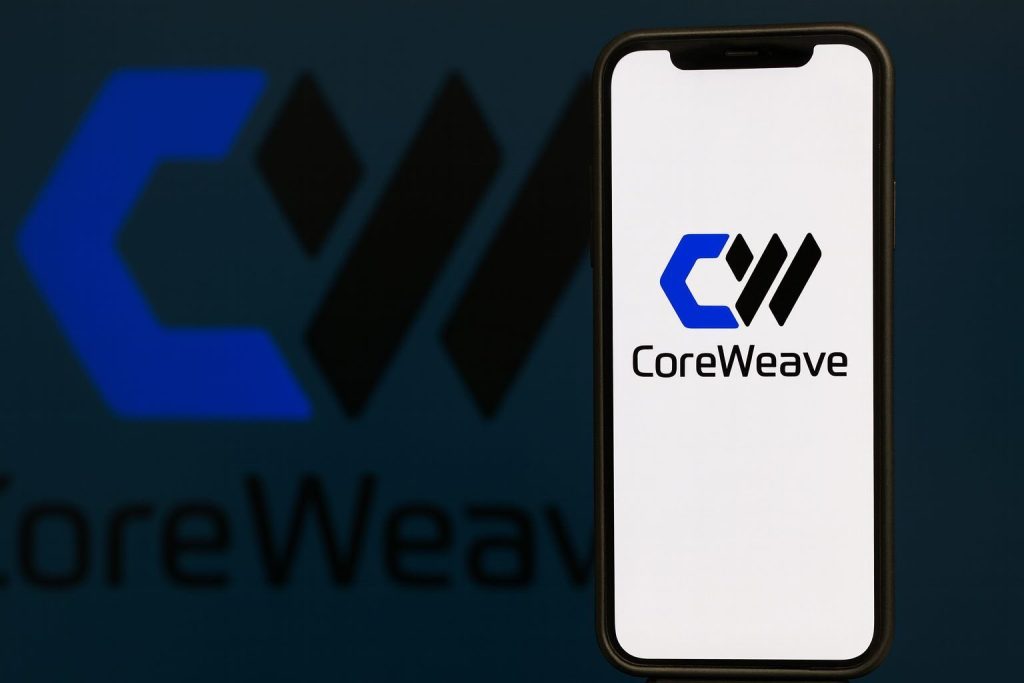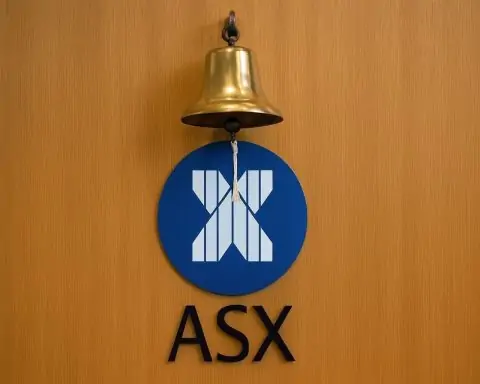Applied Materials stock heads into Friday’s U.S. market open sitting near record territory, as investors weigh a powerful AI- and memory-driven growth story against intensifying geopolitical and regulatory risks.
As of Wednesday’s close (November 26, 2025), AMAT finished at $249.97, up 3.1% on the day and just below its 52‑week high of $252.66. After-hours trading nudged the shares slightly higher to about $250.45. [1] At roughly $199 billion in market value and a trailing P/E near 29, Applied is priced as a premier way to play the AI semiconductor build‑out — and the latest newsflow has only sharpened that narrative. [2]
Below is a breakdown of the key drivers investors are likely to focus on before the bell on Friday, November 28, 2025.
AMAT Stock Near Record Highs Heading Into Friday’s Session
The recent rally has put Applied Materials among the better performers in the semiconductor equipment space in 2025:
- Shares are up between ~37% and ~50% year to date, depending on the reference date and data source, outpacing even the strong broader semiconductor equipment group. [3]
- The stock now trades in the upper end of its 52‑week range ($123.74–$252.66) with elevated volume of roughly 8.8 million shares on Wednesday. [4]
On Wednesday, AMAT’s 3.1% gain outpaced peers such as KLA and other chip names highlighted in sector coverage, underscoring renewed relative strength after a bout of post‑earnings volatility earlier in November. [5]
From a sentiment standpoint, the backdrop into Friday’s open is this:
- The stock has recovered from its post‑earnings/China‑headline dip in mid‑November. [6]
- It is now trading above the average 12‑month analyst price target of about $224.46, which implies that recent upgrades — not the old consensus — are setting the tone near term. [7]
Q4 2025: Record Year, Slower Growth
Applied Materials’ fiscal fourth quarter 2025, ended October 26, 2025, delivered a familiar combination for investors: better‑than‑expected earnings, record full‑year results — but a cooling top line.
Key Q4 numbers:
- Revenue: about $6.8 billion, slightly ahead of estimates (~$6.68 billion) but down roughly 3–3.5% year over year. [8]
- Non‑GAAP EPS:$2.17, topping the $2.11 consensus (≈3% beat). [9]
- GAAP EPS: about $2.38, up 14% year over year, helped by margin expansion and mix. [10]
- Non‑GAAP gross margin:48.8%, an improvement of 120 basis points vs. last year, and the sixth straight quarter of positive margin momentum. [11]
For the full fiscal year 2025:
- Revenue: roughly $28.37 billion, up about 4% year over year and a new company record. [12]
- Management noted this was Applied’s sixth consecutive year of growth, with revenue and earnings growing at roughly 12% and 20% compound annual rates over that period. [13]
Guidance: A Flat First Half, Stronger Second Half
Looking ahead, management guided for Q1 2026 revenue of $6.85 billion ± $500 million and non‑GAAP EPS of $2.18 ± $0.20. [14]
On the earnings call, Applied emphasized:
- 2026 should be another growth year,
- with growth weighted to the second half, as spending on leading‑edge foundry/logic, DRAM and high‑bandwidth memory (HBM) ramps to support AI data‑center build‑outs. [15]
This “back‑half‑loaded” outlook is central to the bull case — but it also means any macro or policy shock to that ramp could have an outsized impact on the stock.
China Export Curbs, Layoffs and Washington Scrutiny
The most important near‑term risk for AMAT remains China.
Export Controls and Revenue Hit
In early October, Applied warned that a new U.S. Commerce Department “affiliates rule” — tightening export restrictions to China — could cut revenue by about $710 million, including $110 million from Q4 2025 and around $600 million in fiscal 2026. [16]
Subsequently:
- Reuters reported that this affiliates rule has been temporarily suspended following talks between U.S. President Donald Trump and Chinese President Xi Jinping, with Applied executives estimating the suspension could re‑enable roughly $600 million of sales in fiscal 2026. [17]
- Even so, the company continues to forecast reduced spending in China next year, and still talks about an approximate $600 million headwind to fiscal 2026 revenue from the broader export‑control regime. [18]
At the same time, Applied has been reducing its exposure to China:
- According to company commentary summarized in recent coverage, China accounted for about 28% of systems and services revenue for fiscal 2025, and 25% in Q4, down from the mid‑30% range in prior years. [19]
4% Workforce Reduction
To respond to export‑related headwinds and “streamline” operations, Applied is cutting about 4% of its global workforce. With roughly 35,700 employees, that equates to more than 1,400 jobs, with impacted workers first notified around October 23, 2025. [20]
CEO Gary Dickerson framed the move as part of a broader effort to:
- “Move faster,”
- simplify decision‑making, and
- prepare the company for “significant growth in the coming years” despite near‑term pressure from export curbs. [21]
Congressional and Policy Pressure
China‑related scrutiny goes beyond the Commerce Department:
- A U.S. House Select Committee on the CCP investigation recently criticized several semiconductor equipment makers — including Applied Materials — for fueling China’s chip manufacturing capability and selling tools to state‑owned or military‑linked entities, estimating that Applied derived about 36% of its 2024 revenue from China. [22]
- A new bipartisan House bill, discussed in late‑November coverage, would bar CHIPS Act grant recipients from buying Chinese chip‑making equipment for 10 years, albeit with waivers and with restrictions limited to equipment imported into the U.S. [23]
Paradoxically, that bill could benefit U.S. toolmakers like Applied if it nudges more U.S. fabs toward American and allied equipment vendors. But the overall message from Washington is clear: export rules are tightening, not loosening, and investors will remain extremely sensitive to any new headlines on this front.
AI and DRAM “Super‑Cycle”: The Bull Case Gets Louder
Counterbalancing the China overhang is a powerful AI‑driven demand story, particularly in DRAM and HBM — and that’s what has triggered the latest leg higher in the stock.
UBS: “Largest Beneficiary of DRAM Spending Surge”
On November 25, UBS upgraded Applied Materials from Neutral to Buy and raised its price target from $250 to $285, calling AMAT the “largest beneficiary” of an upcoming DRAM spending surge. [24]
UBS’s thesis, echoed in several summaries, rests on a few key points:
- A DRAM “super‑cycle” as AI data centers demand enormous amounts of high‑bandwidth memory. [25]
- A forecast that the global wafer fabrication equipment (WFE) market could grow more than 20% in 2026 to about $136.5 billion, and potentially approach $145 billion by 2027. [26]
- The view that the industry is underestimating China’s WFE demand in 2026, with UBS projecting ~11% growth versus more cautious consensus expectations — another potential tailwind for Applied. [27]
UBS also estimates AMAT’s 2027 EPS around $13, well above the current Street consensus of roughly $11.56, arguing that the market is not fully pricing in the DRAM and China upside. [28]
New Tools for AI‑Class Chips
Fundamentally, Applied is trying to cement its position at the heart of AI chip manufacturing. On October 7, 2025, the company unveiled three major systems targeting the most demanding AI workloads: [29]
- Kinex™ – described as the industry’s first integrated die‑to‑wafer hybrid bonding system, designed to improve performance and power efficiency in complex multi‑die packages used in GPUs and high‑performance computing.
- Centura™ Xtera™ Epi – an epitaxy tool for 2nm‑class Gate‑All‑Around (GAA) transistors, enabling void‑free source/drain structures with 50% lower gas usage and over 40% better cell‑to‑cell uniformity vs. conventional epi processes.
- PROVision™ 10 eBeam Metrology – an eBeam system using cold field emission that promises up to 50% higher image resolution and up to 10× faster imaging, aimed at defect detection and overlay control in complex 3D logic and memory structures.
These systems are already being used by multiple leading logic and memory chipmakers and OSATs, suggesting that the AI spending wave is translating into real tool adoption, not just marketing slides. [30]
Margins, Valuation and Wall Street View
Margin Expansion Despite Rising R&D
Zacks’ latest deep‑dive on Applied highlights that the company’s gross margin of 48.8% in Q4 marked its sixth consecutive quarter of improvement, thanks to mix shifts toward high‑margin solutions such as advanced etch, GAA, backside power delivery and cutting‑edge DRAM nodes. [31]
At the same time:
- R&D spending rose about 10% year over year in Q4, to roughly $917 million, as Applied invests in next‑generation tools for AI chips — while trimming general and administrative costs and headcount to keep operating margins steady. [32]
From a valuation standpoint, Zacks notes that AMAT trades at a forward price‑to‑sales ratio around 6.6×, below an industry average of roughly 7.7×, even after its strong run, and carries a Zacks Rank #3 (Hold) with consensus earnings expected to grow ~1% in fiscal 2025 and ~16% in 2026. [33]
Ratings and Price Targets
Across Wall Street:
- StockAnalysis data show 28 analysts covering AMAT with an overall “Buy” rating and an average price target near $224, implying modest downside from current levels but reflecting older, pre‑upgrade estimates. [34]
- TD Cowen recently raised its price target to $260 (from $250) while reiterating a Buy rating, citing stronger‑than‑feared guidance, six consecutive years of growth, and preparations for higher demand in the second half of 2026. [35]
- GuruFocus assigns Applied a GF Score of 94/100, signalling very strong combined potential across financial strength, profitability, growth and momentum, with operating margins nearing 30% and an Altman Z‑Score over 9, indicating low financial distress risk. [36]
In short, the Street’s fundamental view remains broadly positive, but the stock is now trading above the prior consensus target range, meaning any disappointment — from China headlines to AI spending timing — could spark volatility.
Institutional Flows and Insider Activity
Recent filings and alerts show a lively tug‑of‑war among institutional investors:
- Vinva Investment Management boosted its position by 56.1% in Q2 to 75,032 shares (≈$13.7 million). [37]
- Quadrant Capital Group increased its stake by 40.1% to 26,089 shares, while other funds such as Russell Investments and Westfield Capital Management made large percentage increases in holdings. [38]
- On the other side, Korea Investment CORP trimmed its position by 1.3% to about 606,426 shares, or roughly 0.08% of the company. [39]
Overall, around 80% of AMAT’s float is held by institutions and hedge funds, underscoring its status as a core institutional AI‑hardware holding. [40]
On the insider front:
- Senior Vice President and Chief Legal Officer Teri A. Little sold 4,000 shares on November 25, 2025, at around $238.24–$238.24 per share, a transaction worth roughly $953,000. [41]
- After the sale, she still directly holds 84,351 shares, including performance and restricted stock units vesting through 2027, and the sale represents only about a 4.5% reduction in her position. [42]
Isolated insider sales like this are not unusual in large, mature tech companies and often relate to diversification or pre‑set trading plans, but traders sometimes treat them as a short‑term sentiment data point, especially when a stock is near all‑time highs.
What to Watch Before the November 28 Open
Heading into Friday’s session, here are the main things traders and longer‑term investors are likely to watch around AMAT:
- Market tone after the Thanksgiving break
- With the stock near record levels, broader risk‑on or risk‑off sentiment in tech and AI names could meaningfully sway early trading.
- Follow‑through on the UBS and TD Cowen upgrades
- The recent move has priced in some of the DRAM “super‑cycle” optimism. Further upside may require incremental positive data — such as stronger memory pricing, improved foundry capex plans, or more bullish WFE forecasts from peers. [43]
- China and policy headlines
- Any updates on export‑control rules, the proposed CHIPS Act equipment ban, or additional Congressional scrutiny could quickly affect the stock, positive or negative. [44]
- Read‑throughs from peers and macro data
- Moves in peers such as Lam Research, KLA, and ASML, as well as U.S. economic data and rate‑cut expectations, will shape sector sentiment. [45]
- Technical levels around the high‑$240s to low‑$250s
- With AMAT hovering just below its 52‑week high, traders will be watching whether the stock can break out above the $252 area or whether that zone acts as near‑term resistance. [46]
Bottom Line
Applied Materials enters Friday’s trading day as a high‑conviction AI infrastructure play priced for continued success:
- It has just delivered record full‑year results with expanding margins,
- is rolling out cutting‑edge tools for GAA, HBM and advanced packaging, and
- now enjoys a Street‑high $285 price target from UBS built on an aggressive DRAM and WFE growth outlook. [47]
Yet the stock also faces:
- Non‑trivial geopolitical and regulatory risks centered on China,
- a workforce reduction that underscores near‑term pressure, and
- a valuation that already reflects a good portion of the AI boom’s promise. [48]
For investors watching AMAT before the November 28 open, the question is not whether the company is at the center of the AI chip build‑out — it clearly is — but whether earnings and free cash flow over the next two to three years can grow fast enough to justify today’s premium price in the face of shifting export rules and macro uncertainty.
This article is for informational purposes only and does not constitute investment advice or a recommendation to buy or sell any security. Always do your own research and consider consulting a qualified financial advisor before making investment decisions.
References
1. stockanalysis.com, 2. stockanalysis.com, 3. www.reuters.com, 4. stockanalysis.com, 5. www.marketwatch.com, 6. stockanalysis.com, 7. stockanalysis.com, 8. www.investing.com, 9. www.investing.com, 10. finviz.com, 11. www.nasdaq.com, 12. www.investing.com, 13. www.investing.com, 14. www.investing.com, 15. www.investing.com, 16. www.investopedia.com, 17. www.reuters.com, 18. www.reuters.com, 19. www.dqindia.com, 20. www.datacenterdynamics.com, 21. www.datacenterdynamics.com, 22. selectcommitteeontheccp.house.gov, 23. www.dqindia.com, 24. www.barrons.com, 25. www.barrons.com, 26. www.barrons.com, 27. www.barrons.com, 28. www.proactiveinvestors.com, 29. www.stocktitan.net, 30. www.stocktitan.net, 31. www.nasdaq.com, 32. www.nasdaq.com, 33. www.nasdaq.com, 34. stockanalysis.com, 35. finviz.com, 36. www.gurufocus.com, 37. www.marketbeat.com, 38. www.marketbeat.com, 39. www.marketbeat.com, 40. www.marketbeat.com, 41. www.investing.com, 42. www.investing.com, 43. www.barrons.com, 44. www.reuters.com, 45. www.nasdaq.com, 46. stockanalysis.com, 47. www.investing.com, 48. www.datacenterdynamics.com








